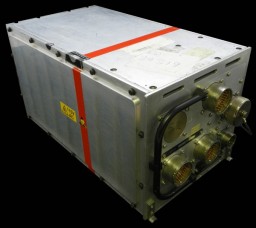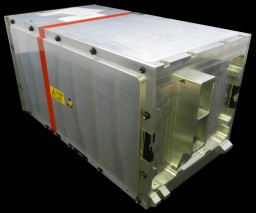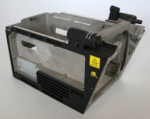In the mid-90s the Company developed a variant of the F-16C/D HUD called the Enhanced Display Unit. It was intended primarily to reduce the cost of the F-16C/D Pilot’s Display Unit both in material and maintenance.
The PDU chassis was re-jigged such that two Deflection circuit modules fitted onto the outside walls and the Video Card lay flat inside., The Combiner was changed to have a dielectric coating (Vanadium Oxide) to improve the luminance and the CRT phosphor was also changed to P53 to allow it to be driven harder.
The interface remained the same so that the EDU could ‘plug and play’ with the legacy Electronics Unit or the parallel development of an Advanced Electronics Unit (AEU) or indeed Display Drivers from other suppliers, for example the multi-role GAC or Mission Computer from Raytheon. The AEU had the same form factor as the legacy F-16 C/D Electronics Unit but reduced the card count from twenty-one to just three which were mounted fore and aft rather than across the box.
As part of the F-16 Mid Life Update package it was decided to fit the Texas Instruments Modular Mission Computer (MMC) The MMC takes up 42% less volume in the aircraft, weights 55% less and consumes 37% less electrical power. Subcontractors are Terma, Nea Lindberg and Signaal. This computer consists of line-replaceable modules (LRMs) based upon several MIPSCO R3000 32-bit RISC microprocessors which run the ADA high-order language. It replaces three components, namely the computers currently in use for the Expanded Fire Control Computer (XFCC), the Head Up Display Electronics Unit (HUD EU or HUD symbol generator), and the Stores Management System's Expanded Central Interface Unit (XCIU). By 2014 1758 of these units had been fitted largely replacing the Company EU.
The EDU was was fitted to some Block 60 F-16 E and F models. The Block 60 ‘Desert Falcon’ has been described as a lower-budget alternative to the F-35A Joint Strike Fighter and some sources claim it is a much better system than the Block 50/52 aircraft.







